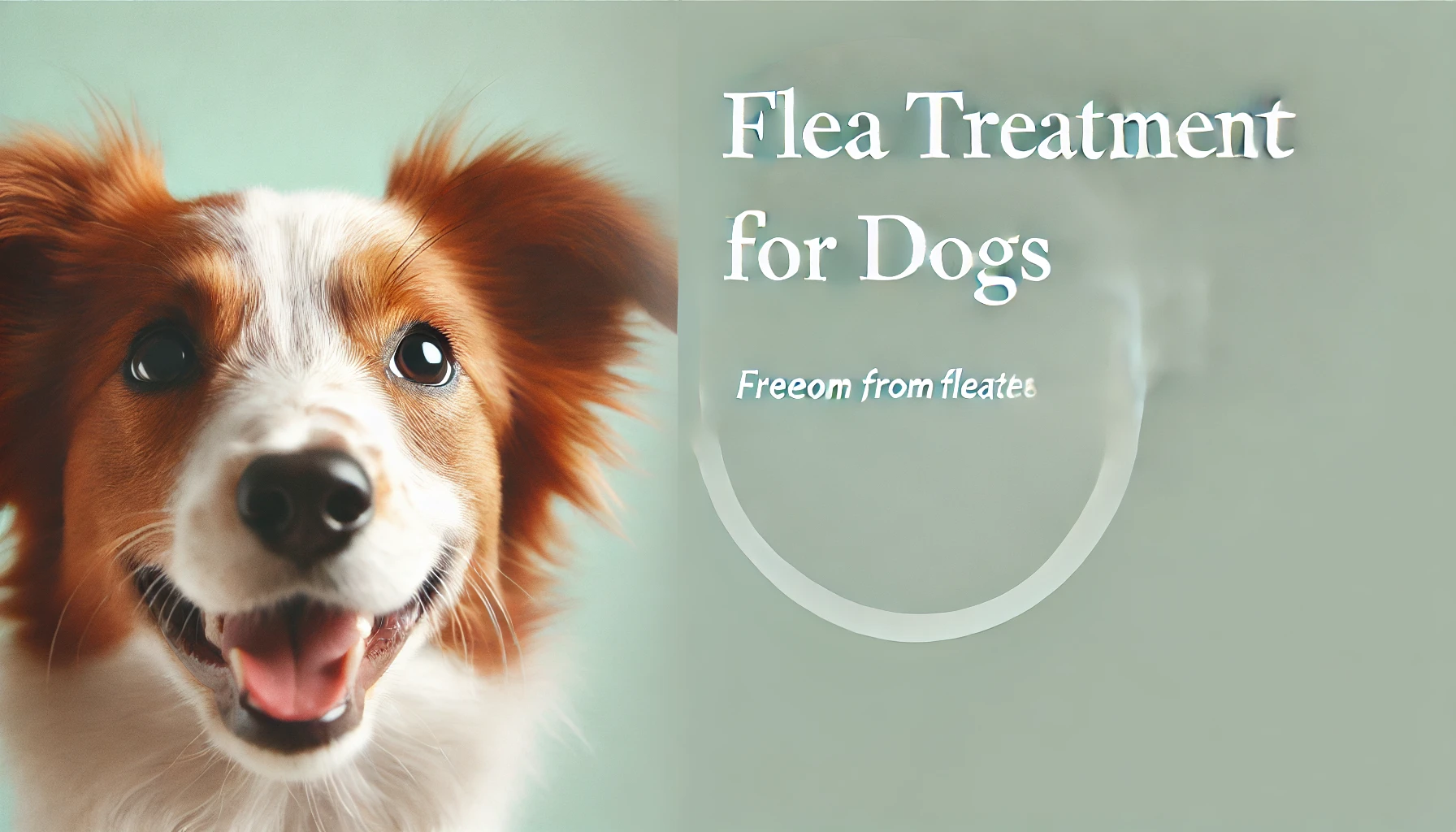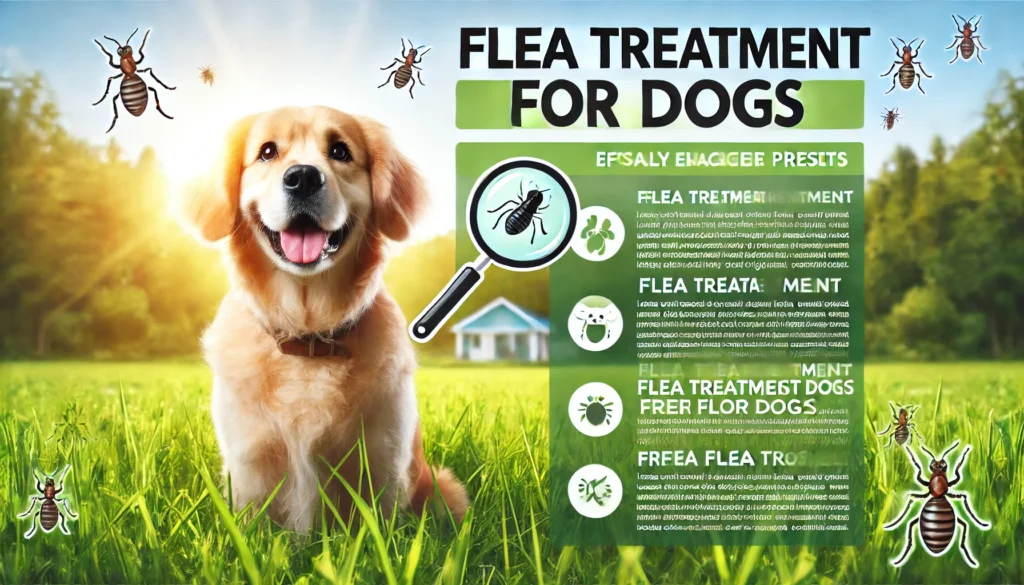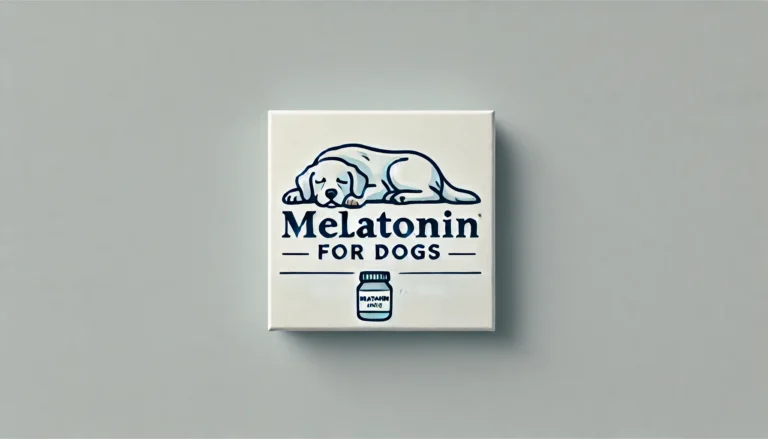flea treatment for dogs? An amazing Guide

flea treatment for dogs are not just a nuisance
They pose serious health risks to pets and humans alike. This comprehensive guide delves into the various methods of flea and tick prevention, helping pet owners make informed decisions on how best to protect their furry friends.
Understanding Fleas and Ticks
Fleas are small, wingless insects that live by consuming the blood of their hosts. They breed rapidly, especially in warm, humid environments. A single flea can lay up to 50 eggs a day, turning a small problem into an infestation very quickly.

Ticks are parasitic arachnids that also feed on blood. They are capable of transmitting a variety of diseases such as Lyme disease, Rocky Mountain spotted fever, and tularemia. Unlike fleas, ticks do not jump but latch onto hosts from the environment.
Health Risks Associated with Fleas and Ticks
- Diseases: Beyond the discomfort of their bites, fleas can transmit tapeworms and murine typhus, while ticks are vectors for Lyme disease, ehrlichiosis, and anaplasmosis.
- Allergic Reactions: Some pets may develop severe allergic reactions to flea bites, known as Flea Allergy Dermatitis (FAD), which can lead to intense itching and secondary skin infections.
Flea and Tick Prevention Strategies
Effective flea and tick control involves a combination of on-pet treatments and environmental control strategies. Here’s what you need to know about each method:
On-Pet Treatments
- Topical Treatments: Products like Frontline flea and tick or Advantage flea and tick are applied to the pet’s skin, usually between the shoulder blades. These medications work by killing or repelling pests as they come in contact with the treatment on the pet’s coat.
- Oral Medications: Flea pills for dogs, such as Nexgard and Bravecto, are popular for their ease of use and effectiveness. These pills can provide up to three months of protection against both fleas and ticks.
- Flea Collars: Seresto collars are a convenient option for continuous flea and tick prevention, lasting up to 8 months. They release a low concentration of pesticide that spreads across the pet’s body through the natural oils of the skin.
- Shampoos and Sprays: Medicated flea shampoos and flea sprays provide immediate kill of fleas and ticks but do not provide long-lasting protection. They are useful during active infestations and for immediate relief.
- Injectable Options: The flea and tick shot, known as Canine Lyme Disease Vaccine, is administered by a vet to help prevent Lyme disease specifically in dogs.
Do you know
Pistachios are popular nuts known for their unique, rich flavor and health benefits in humans. These nuts are a member of the cashew family, and they’re packed with nutrients.
Environmental Control
- Home and Yard Treatments: Flea powders, sprays, and foggers can be used to treat infested areas inside the home. Outdoors, treatment focuses on lawns, bushes, and under decks to control tick populations.
- Cleaning: Regular vacuuming of floors, carpets, and furniture can help remove flea eggs and larvae. Washing pet bedding in hot water weekly is also critical.
- Natural Remedies: For those hesitant to use chemical treatments, natural flea and tick prevention methods include diatomaceous earth, essential oil sprays (such as those made from lemongrass, peppermint, or cedar oil), and homemade tick repellents.
Best Practices for Flea and Tick Prevention
- Year-Round Protection: Fleas and ticks can be a year-round problem, especially in warmer climates. Continuous prevention is crucial rather than waiting for an infestation to occur.
- Regular Checks: Especially after your pet has been in wooded or grassy areas, regular checks for ticks can prevent disease transmission and further infestation.
- Consult Your Veterinarian: Before starting any new medication, whether it’s an oral pill, a topical application, or a diet supplement, consult with your veterinarian. They can provide recommendations based on your pet’s health history and lifestyle.
- Be Informed About Products: Understand the active ingredients in flea and tick products, their side effects, and the proper way to apply them. Products like Frontline, Nexgard, and Seresto have been evaluated for safety and effectiveness but check if there are any breed-specific issues or health concerns.
Conclusion of flea treatment for dogs
Preventing fleas and ticks is an essential part of pet care that not only protects the health of your pet but also prevents these pests from becoming a problem in your home. With the right knowledge and products, you can keep your pet safe from fleas and ticks all year round. Always stay proactive and vigilant, and when in doubt, seek advice from your veterinarian to tailor a flea and tick control program that best suits your pet’s needs and your environmental conditions.






